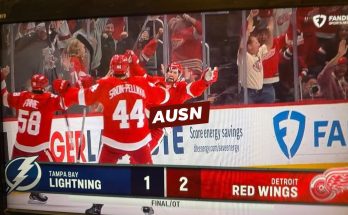The Edmonton Oilers are once again at a crossroads following another heartbreaking end to their playoff campaign. Despite a strong regular season and a deep postseason run, the team fell short of capturing the Stanley Cup, which continues to elude the franchise since their last win in 1990. As the organization enters another pivotal offseason, the front office, led by General Manager Jeff Jackson and CEO of Hockey Operations Ken Holland, faces some critical decisions that could reshape the roster’s structure heading into the 2025-26 NHL season.
One of the biggest questions involves Viktor Arvidsson, the speedy and skilled winger acquired from the Los Angeles Kings during the season. Though Arvidsson brought energy and depth to the Oilers’ forward group and contributed valuable playoff experience, his pending unrestricted free agent status and cap hit have put him at the center of trade discussions. With Edmonton facing significant salary cap challenges and the need to re-sign or replace several key players, moving Arvidsson could be the key to unlocking more financial flexibility and making the bold moves required to push this team over the championship hump.
Arvidsson, 32, is coming off a season that was disrupted by injury, but when healthy, he remained a productive and versatile forward. In 35 games with the Kings and Oilers combined, he registered 23 points, including 9 goals and 14 assists. In the playoffs, he added another 6 points in 13 games. His ability to play both wings, contribute on the power play, and bring speed to the forecheck made him a valuable mid-season addition. However, his current cap hit of \$4.25 million and the Oilers’ tightening financial situation raise questions about whether they can—or should—afford to keep him.
The Oilers already have major cap obligations tied to cornerstone players like Connor McDavid, Leon Draisaitl, Darnell Nurse, and Ryan Nugent-Hopkins. They must also contend with expiring contracts for key contributors such as Evan Bouchard, who is due for a significant raise after another breakout campaign, and goaltender Stuart Skinner, who is set for arbitration eligibility next season. In addition, the team must decide whether to re-sign or replace important depth players like Warren Foegele, Mattias Janmark, and Vincent Desharnais, all of whom played meaningful roles during the playoff run.
Given these pressures, trading Arvidsson becomes less about his value on the ice and more about the opportunity cost of keeping him. Edmonton needs to create space to retool its blue line, potentially pursue a veteran goaltender to support Skinner, and add depth scoring that can deliver more consistency beyond the top two lines. The \$4.25 million that would be cleared by moving Arvidsson could prove essential in allowing management to execute a broader offseason plan. While moving him would leave a hole in the lineup, the cap flexibility could enable the Oilers to address multiple needs and create a more balanced and playoff-resilient roster.
There are multiple teams across the NHL who may be interested in acquiring Arvidsson’s services, particularly those with cap space and a need for experienced top-six forwards. His contract situation makes him a relatively low-risk acquisition for teams seeking short-term scoring depth without long-term financial commitments. He could be an ideal fit for rebuilding teams looking to surround young talent with veterans, or for playoff hopefuls seeking to bolster their middle-six forward group. The Oilers may not receive a high-end return for Arvidsson, given the short-term nature of his deal, but even a mid-round draft pick or a low-cost prospect would be a valuable asset when combined with the freed-up cap space.
Another factor in this potential move is the long-term outlook of the franchise. With Leon Draisaitl’s contract set to expire after the 2025-26 season and Connor McDavid’s deal ending the year after that, the organization must make a serious push to win now while their two superstars are still under contract. Failing to progress deeper in the playoffs—or worse, regressing—could have catastrophic consequences, including the potential departure of one or both franchise players. Every decision made this summer will be measured against that backdrop: does this move bring the team closer to winning a Stanley Cup within the next two years?
Arvidsson’s injury history also plays a role in the Oilers’ calculus. Although he has proven to be effective when healthy, durability has become a concern. In the past three seasons, he has missed over 60 games due to various injuries, including back and lower-body issues. Relying on him to be a core piece in a top-six role carries a degree of risk, particularly when the team is so heavily dependent on its elite forwards to generate offense. Trading him could be seen as a proactive step toward reducing injury-related volatility and investing in more dependable options.
On the other hand, retaining Arvidsson could provide continuity and veteran savvy that is hard to replace in free agency. His playoff experience, which includes deep runs with both the Nashville Predators and Los Angeles Kings, is a valuable asset in the locker room. He also meshed well with Edmonton’s offensive structure, providing speed on the rush and a shoot-first mentality that complemented the playmaking skills of McDavid and Draisaitl. If the Oilers believe they can find savings elsewhere—perhaps through buyouts, minor trades, or internal promotions—then keeping Arvidsson for one more year could still be part of a win-now strategy.
The coaching staff’s perspective will also be influential. After the midseason firing of Jay Woodcroft, Kris Knoblauch took over as head coach and helped stabilize the team’s performance. Arvidsson was one of the players who adapted quickly to the new system and earned the trust of the coaching staff. His versatility allowed Knoblauch to shuffle lines without sacrificing speed or hockey IQ, and his defensive commitment was evident in his penalty-killing role. From a tactical standpoint, Arvidsson fits the mold of the type of player Knoblauch wants in his system. Losing him could mean reshaping the roster to maintain the same level of two-way play.
Ultimately, the decision to trade Viktor Arvidsson is emblematic of the difficult choices teams face under a hard salary cap. There is no easy answer. The Oilers are not looking to offload a player because of underperformance or locker-room issues; they’re evaluating whether moving on from a good player is the best way to become a great team. That kind of strategic thinking is necessary for franchises on the cusp of contention but needing just the right balance to get over the final hurdle.
The upcoming NHL Draft and free agency period will be telling. If the Oilers can find a trade partner for Arvidsson early in the offseason, they could use the resulting cap space to make a splash in free agency or pursue a more significant trade for a top-four defenseman or secondary scoring forward. There’s also the possibility that the Oilers explore a package deal involving Arvidsson and another contract to sweeten the return or further ease cap constraints. Creativity will be essential, especially with so many other contenders navigating similar salary pressures.
It’s also worth noting that the Oilers are in a position of strength compared to many teams. They have a generational core, a hungry and talented supporting cast, and a fan base that has tasted recent playoff success. But the window to win doesn’t stay open forever, especially when stars like McDavid and Draisaitl begin to think about their long-term futures. Every asset, including Arvidsson, must be evaluated in the context of maximizing the team’s championship window while preserving flexibility for the seasons ahead.
As the summer unfolds, Oilers fans will watch closely to see how the front office handles this complex offseason. Trading Viktor Arvidsson might not be the most glamorous move, and it may come with short-term pain. But if it enables the team to add a reliable top-four defenseman, sign a veteran goaltender, or secure much-needed depth scoring, it could go down as the savvy move that helped Edmonton take the final step toward hoisting Lord Stanley’s Cup. For a team on the verge, every decision counts. And this one might count the most.


